less than 260prisoners 36 (later 28 executed) about 300 | Date 29 January 1918 | |
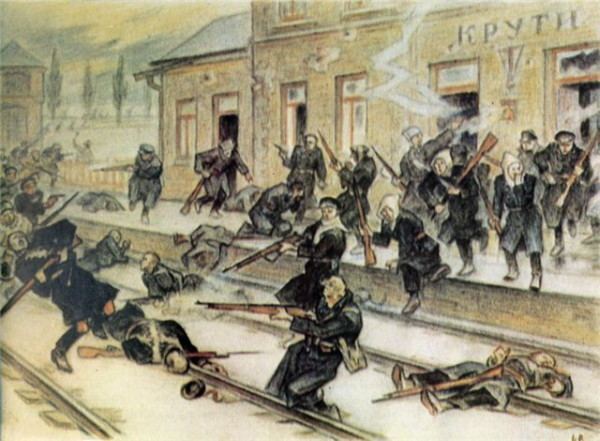 | ||
D.NosenkoAverkiy Honcharenko Mikhail MuravyovPavel YegorovReinholds Bērziņš Result Bolshevik victory, small group of students withdrew Similar Ukrainian War of Independence, Kiev Arsenal January, Ukrainian–Soviet War, Brusilov Offensive, Battle of Konotop | ||
The Battle of Kruty (Ukrainian: Бій під Крутами, Biy pid Krutamy) took place on January 29 or 30, 1918 (in Soviet historiography January 29, 1918), near Kruty railway station (today the village of Pamiatne, Borzna Raion, Chernihiv Oblast), about 130 kilometres (81 mi) northeast of Kiev, Ukraine, which at the time was part of Nezhinsky Uyezd of Chernigov Governorate.
Contents
- History of the battle of kruty english
- Order of battle
- Brief description
- Aftermath
- Ukrainian legacy
- Important personalities
- References
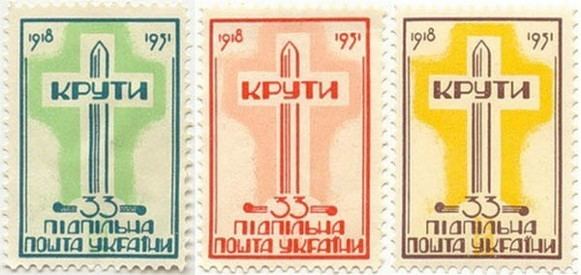
History of the battle of kruty english
Order of battle
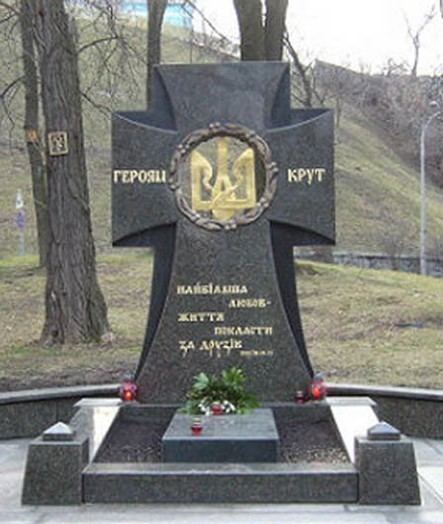
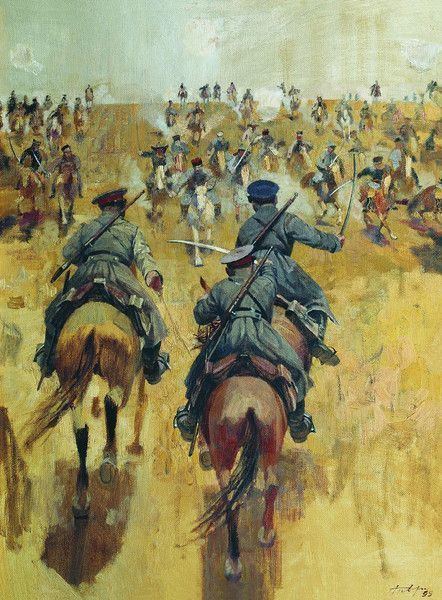
Brief description
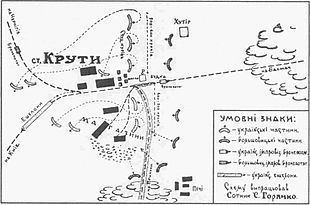
As Bolshevik forces of about 4,000 men, commanded by Mikhail Muravyov, advanced toward Kiev, a small Ukrainian unit of 400 soldiers of the Bakhmach garrison (about 300 of which were students), commanded by initially by Captain F.Tymchenko, withdrew from Bakhmach to a small railroad station Kruty midway towards Nizhyn. The small unit consisted mainly of the Student Battalion (Kurin) of Sich Riflemen, a unit of the Khmelnytsky Cadet School, and a Free Cossacks company. Just before the assault Tymchenko was replaced by D.Nosenko, while Tymchenko left for Nizhyn in attempt to recruit the locally quartered Shevchenko Regiment (800 soldiers) on the Ukrainian side. Nonetheless on January 30, 1918 the regiment sided with the Soviet regime, the news of which forced the Ukrainian garrison of Kruty hastily to withdraw. Over half of the 400 men were killed during the battle, which lasted up to five hours. In the Soviet historiography the battle is mistakenly dated on January 29, 1918 and confused with the Plysky rail station skirmish (uk:Плиски (станція)). The Haidamaka Kish of Symon Petlyura (300 soldiers) that rushed to reinforce the Kruty garrison and was delayed due to the Darnytsia railworkers sabotage stopped in close vicinity (rail station Bobryk) and eventually turned back to Kiev due to the Bolshevik's Arsenal Uprising that occurred on the same day.
Aftermath
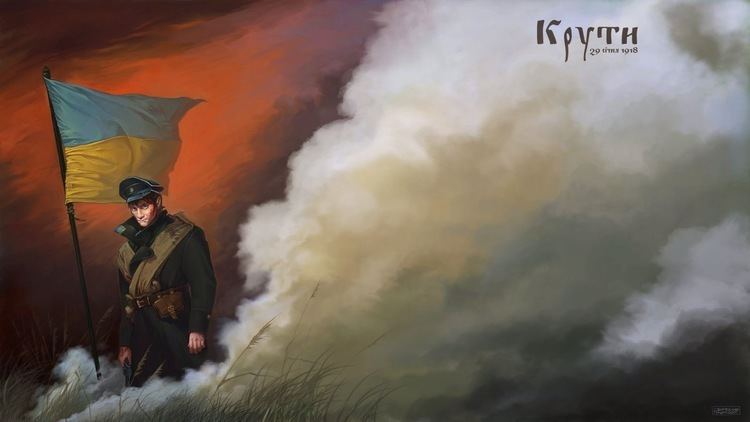
Eleven of the students were re-buried at Askold's Grave in the centre of Kiev after the return of the Tsentralna Rada to the capital in March 1918. At the funeral the then President of the Ukrainian People's Republic, Mykhailo Hrushevsky, called every one of the 400 students who fought in the battle, heroes. In addition, poet Pavlo Tychyna wrote about the heroic death of the students.
After the fall of the Ukrainian People's Republic the bodies of the students were moved to the Lukyanivske Cemetery in Kiev.
Ukrainian legacy
The true story of the battle was hidden by the Soviet Government. Only recently, a monument was set up to commemorate the 80th anniversary of the Battle of Kruty at Askold's Grave, and a commemorative hryvnia coin was minted. In 2006, the Kruty Heroes Monument was erected on the site of the historic battle and is remembered each year on or around January 29.
